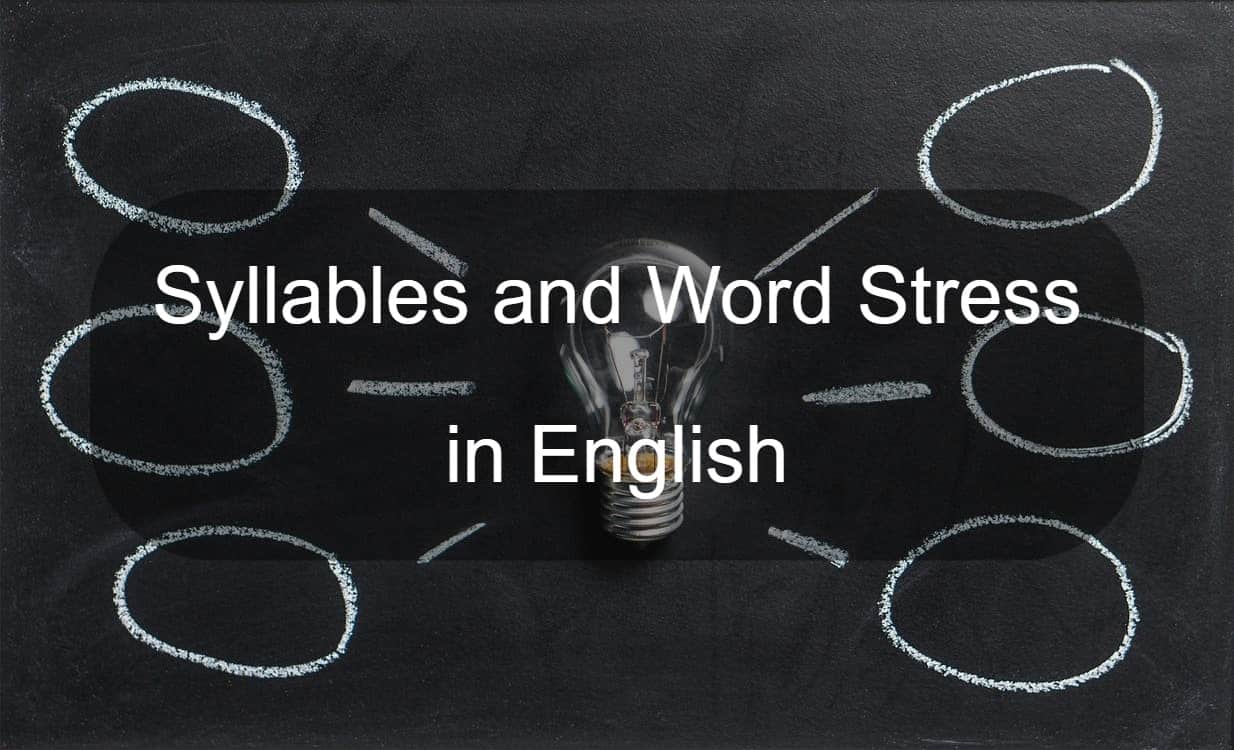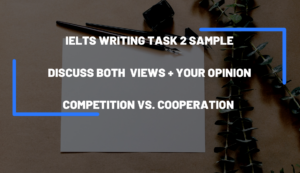Wrod stress is the emphasis we put on a specific syllable in a word. Using word stress the right way makes your speech sound natural and easy to understand. Unfortunately, most non-native speakers find it difficult to master all the aspects of it because of all the rules and their exceptions. Therefore, we always advise learners to look the pronunciation of new words up in a dictionary. As you practice and watch English-speaking movies and news, these rules will start coming naturally to you.
Before we discuss these rules, you need to know what syllables are, and how we indicate them. In this article, we will use (.) to separate syllables in a word. For example, the word beautiful has three syllables and would appear as beau.ti.ful.
Syllables
English alphabet consists of 26 letters. These letters are divided into two groups: vowels (a, e, i, o, u) and consonants, which are the rest. When these vowels and consonants come in a sequence, they form a syllable. Therefore, we can define a syllable as a sequence of speech sounds (formed from vowels and consonants) organized into a single unit. Syllables determine the pace and rhythm of how the word is pronounced.
Question: How do we divide syllables?
Answer:
When it comes to syllables, the vowel sounds that we hear are important, not the written vowels. For example, in the word beautiful, we see five vowels but hear only three; therefore, it has three syllables.
Now let’s look at some examples to make this clear:
Examples:
Art: one vowel sound = one syllable
o.pen = two vowel sounds = two syllables
ex.pen.sive = three vowel sounds = three syllables
Bo.dy = two vowel sounds = two syllables
Note: As you can see, the word body has only one written vowel, but the final consonant y is pronounced as a vowel, so we hear two vowel sounds.
Now that you understand the basics of syllables, let’s move on to word stress.
Word stress
- One word has only one stress.
- Only the vowels are stressed, not consonants.
- Almost all the rules regarding word stress have exceptions.
Now, let’s begin!
Rule 1: Most nouns and adjectives with two or more syllables have stress placed on the first syllable:
Examples:
- Nouns: ap.ple, cli.mate, bot.tle, bu.si.ness, in.ter.net
- Adjectives: hap.py, cle.ver, hon.est, fa.vo.rite, dif.fi.cult
- Verbs: be.come, in.crease, qua.dru.ple
- Prepositions: a.mong, be.hind, bet.ween
Note: Here are some of the exceptions to this rule:
ar.gue, can.cel, en.ter.tain, af.ter, du.ring, and un.der
Answer: In such cases, we often stress the first syllable when it is a noun and the second syllable when it is a verb.
- des.ert = a hot place where only a few things can grow (noun)
- de.sert = to abandon (verb)
- con.test = a game or a competition (noun)
- con.test = to fight against (verb)
Note: As you might have guessed, there some exceptions to this rule as well. Here are some:
- a.mount (noun)
- a.mount (verb)
- at.tack (noun)
- at.tack (verb)
- con.trol (noun)
- con.trol (verb)
Word stress in compound words
Compound words are made up of two or more words joined to make a new word or a word group with a new meaning (e.g., airplane, brother-in-law). If you are not familiar with these words, please read this article before you continue.
Word stress in compound nouns
Word stress in compound verbs
Examples:
proof.read, test-drive, ba.by.sit
Word stress in compound adjectives
Word stress in reflexive pronouns
Word stress in numbers
- In numbers 13-19, we put the stress on “-teen”
Examples: Fif.teen, nine.teen, thir.teen
- In the numbers that are multiples of ten, we put stress on the first syllable.
Examples: thir.ty, six.ty, eigh.ty, one-hun.dred, five-hun.dred
Word stress based on suffixes
- Words that end in the following suffixes have stress placed on the syllable with the suffix:
“-ee”: in.ter.view.ee, at.ten.dee, ref.u.gee
“-eer”: en.gi.neer, vol.un.teer, pup.pe.teer
- In the words that end in “-ology,” stress is placed on the syllable with “-ol-.”
Examples: bi.ol.o.gy, as.trol.o.gy, car.di.ol.o.gy
……………………………………………………………………….
- In the words that end in “-osis,” stress is placed on the syllable with “-o-.”
Examples: hyp.no.sis, mi.to.sis, hal.i.to.sis
……………………………………………………………………….
- Words that end in the following suffixes have stress placed on the syllable immediately before the suffix:
“-eous”: ad.van.ta.geous, cou.ra.geous, righ.teous
“-ious”: re.bel.lious, mys.te.ri.ous, ob.vi.ous
“-ia”: bac.te.ri.a, nos.tal.gia, in.som.ni.a
“-ial”: in.flu.en.tial, con.tro.ver.sial, con.fi.den.tial
“-ic”: a.tom.ic, en.er.get.ic, ec.o.nom.ic
“-ical”: ec.o.nom.i.cal, bi.o.log.i.cal, his.tor.i.cal
“-ify”: fal.si.fy, hor.ri.fy, so.lid.i.fy
“-ity”: a.bil.i.ty, hu.mid.i.ty, le.gal.i.ty
“-tion”: au.di.tion, flo.ta.tion, lo.co.mo.tion
“-sion”: e.ro.sion, il.lu.sion, in.va.sion
……………………………………………………………………….
- Words that end in the following suffixes have stress placed on the third syllable from the last syllable:
“-ate”: col.lab.o.rate, fa.cil.i.tate, in.ad.e.quate
“-cy”: a.gen.cy, va.can.cy, de.moc.ra.cy
Some exceptions: ac.cu.ra.cy, de.li.ca.cy, oc.cu.pan.cy
“-phy”: phi.los.o.phy, cal.lig.ra.phy, ge.og.ra.phy
Final note: These rules will help you improve your pronunciation. The next time you learn a new word, make sure you check its pronunciation as well because learning how to pronounce a word properly is as important as learning its meaning.
Follow us on YouTube for more tips and resources.








